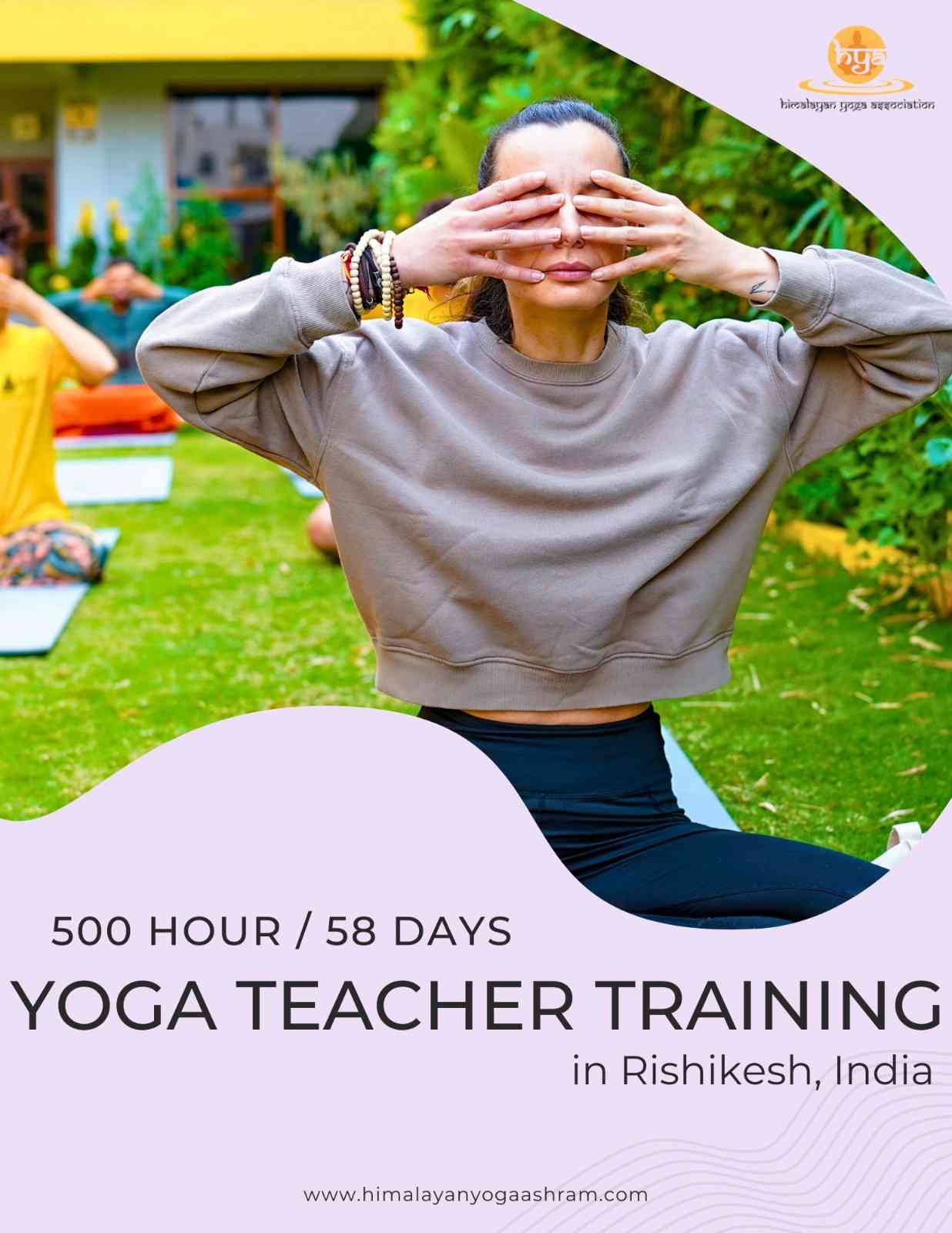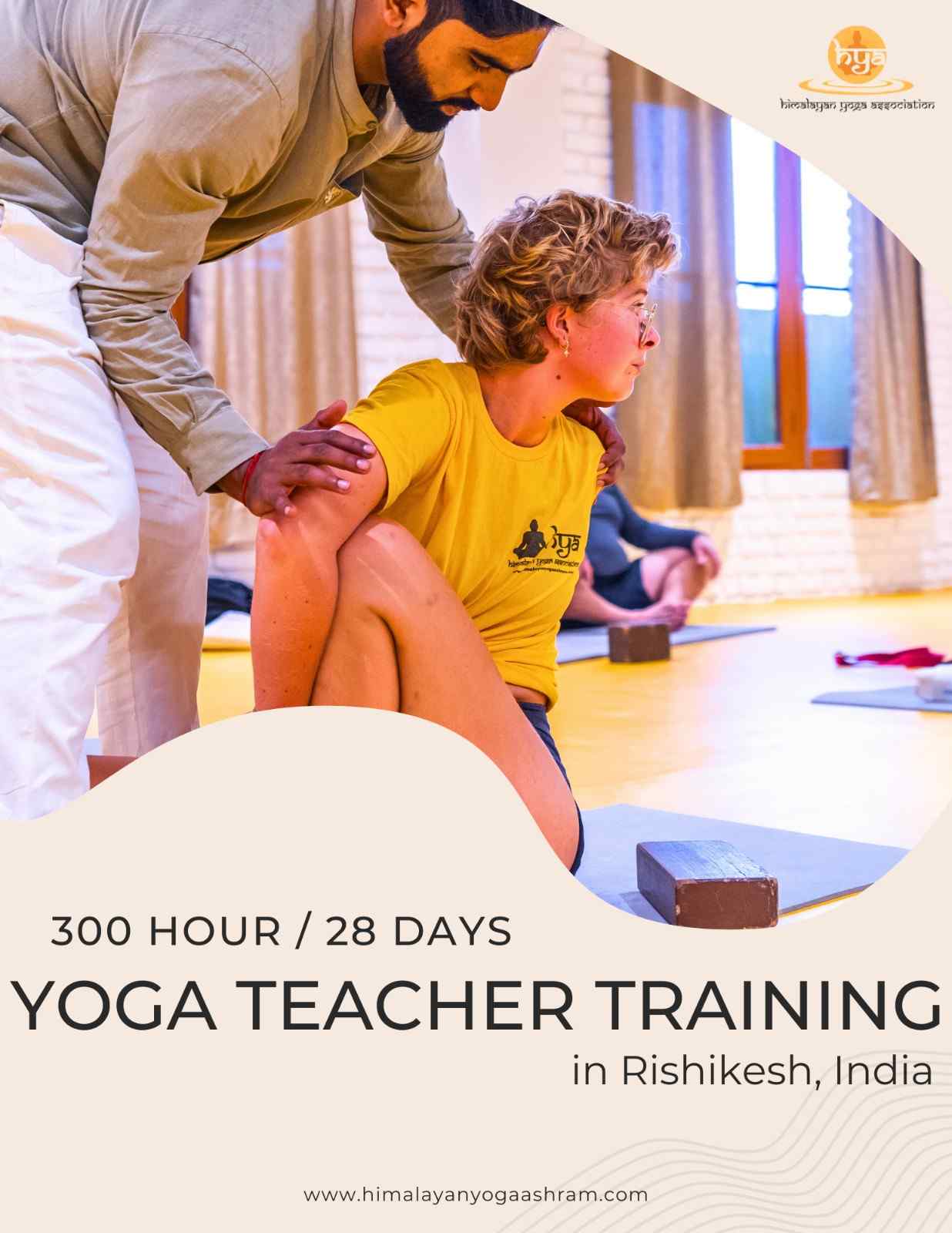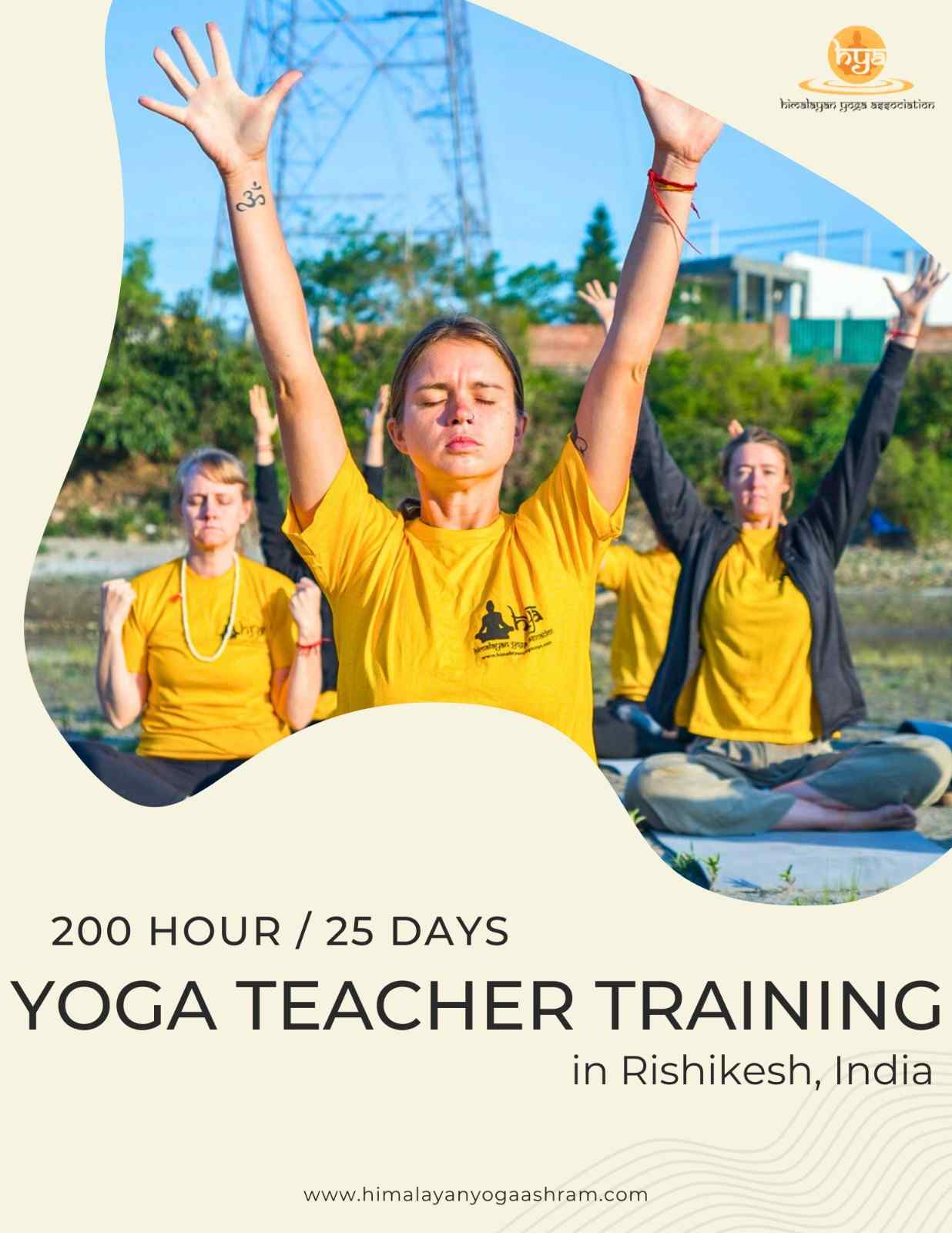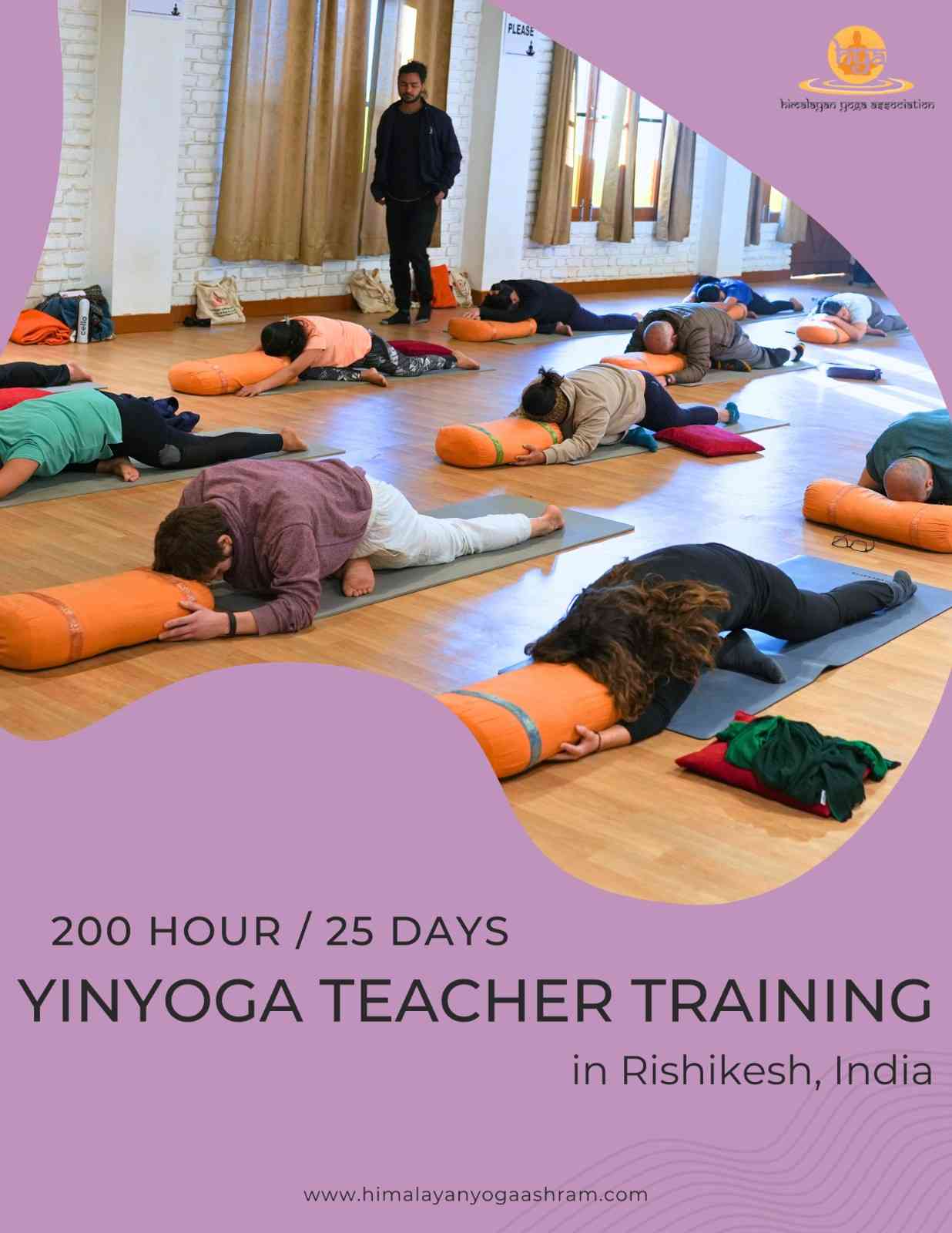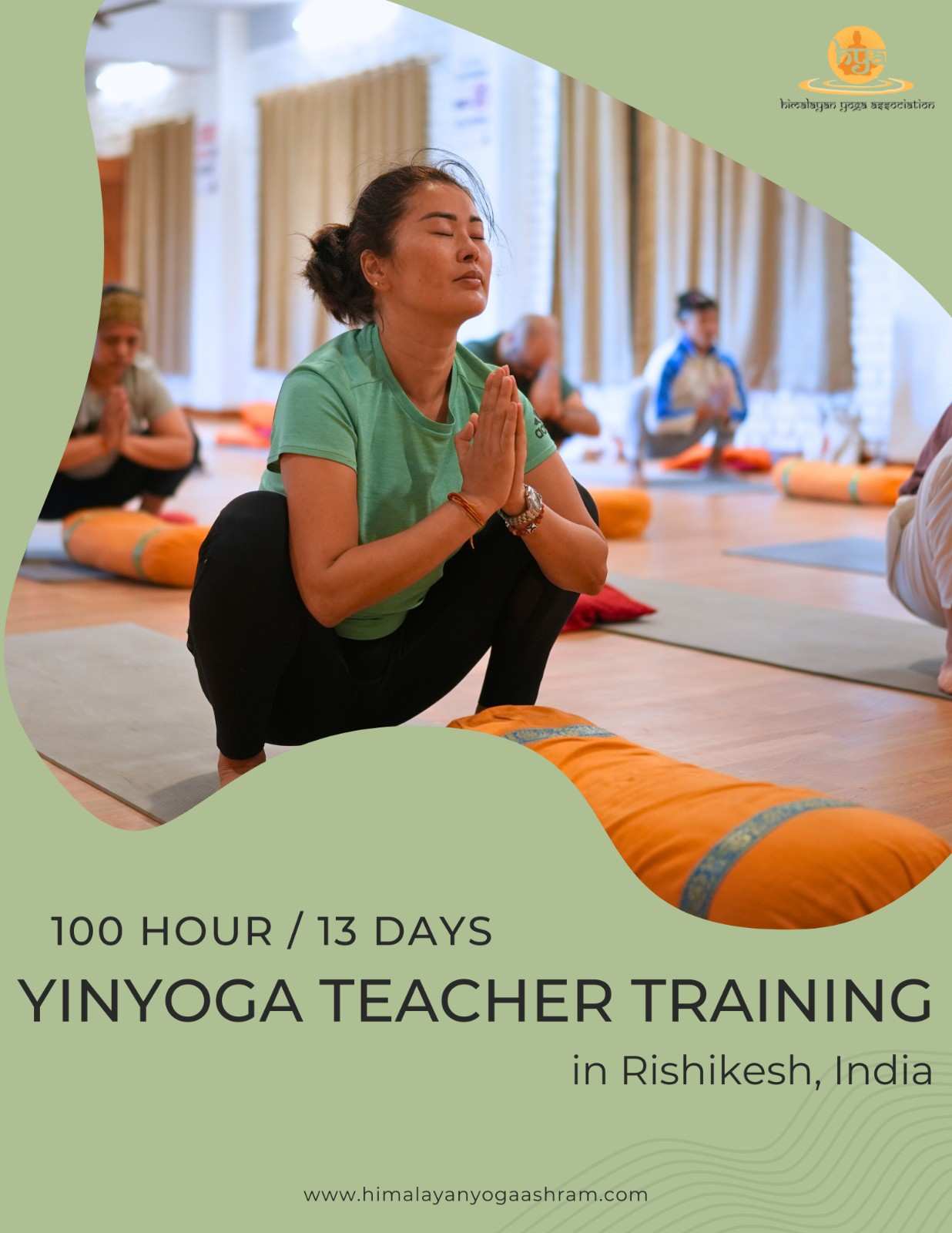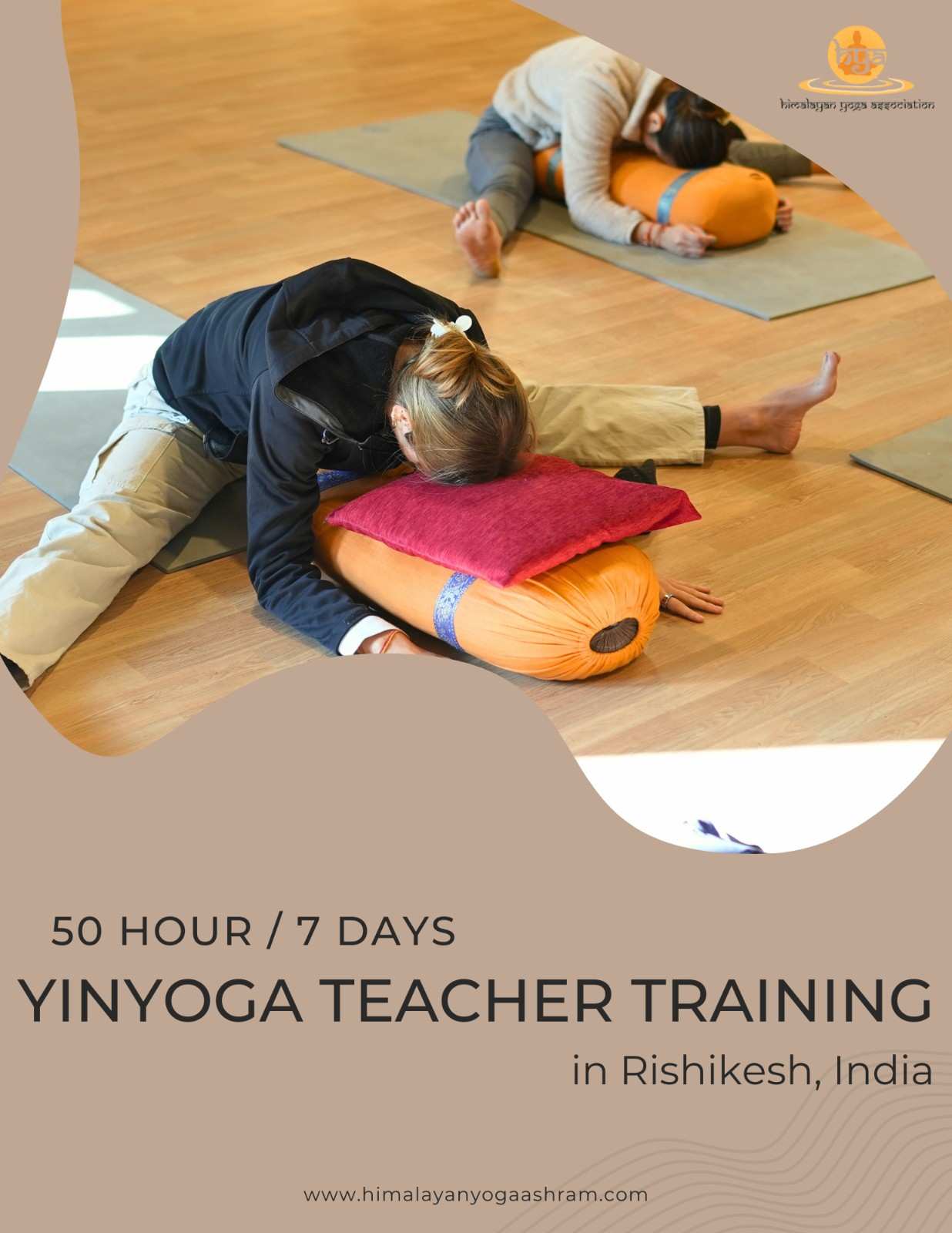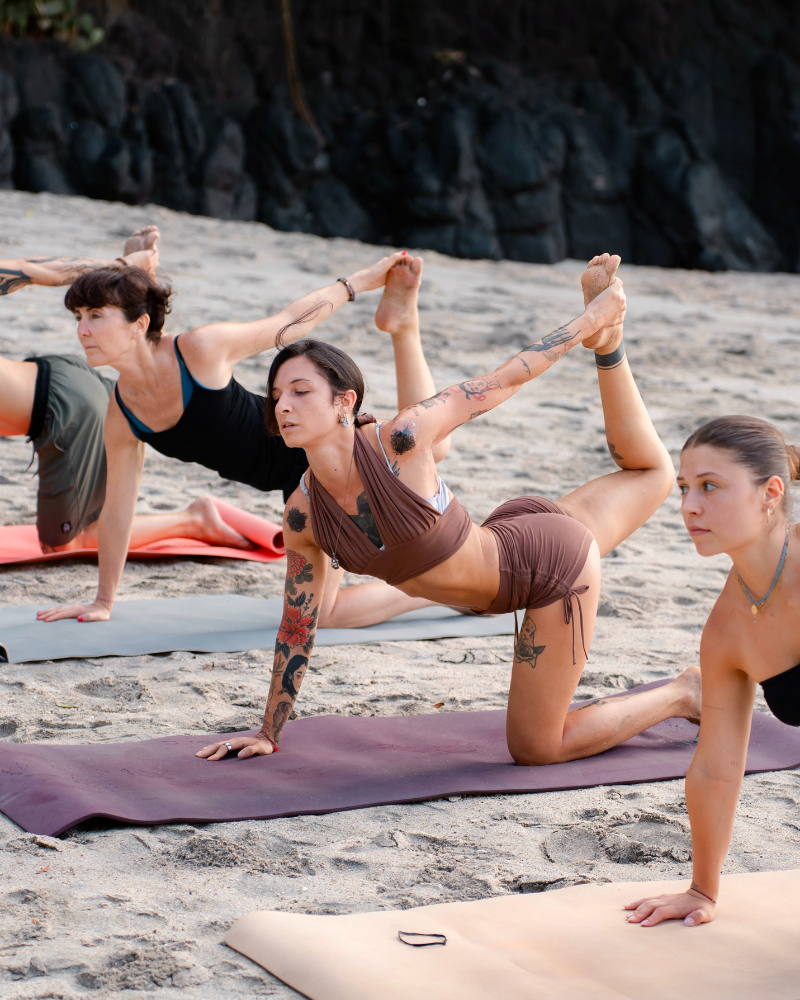You want to learn everything you could possibly know, and practice yoga from a variety of aspects on and off the mat. You have arrived at the right place. We are a leading yoga school from the world capital of yoga, Rishikesh in India.
We have been serving thousands of seekers at the main school branch in Rishikesh, and the second world capital of yoga Ubud, in Bali since yoga became to be popular all over the world. We are very experienced in what we do, and we know this beautiful country full of wisdom, Japan can benefit so much from yoga. This 500 hours yoga teacher training course is a combination of the 200 and the 300 hours yoga teacher training courses that gives you a strong foundation of yoga from all the aspects in the first half, and advanced knowledge and practice in the second half.
We assure you that you will have a great confidence as yoga practitioner as well as teaching many different kinds of aspects of yoga to people after completing this course with us. Create life where you can be feeling the bliss regardless of the outside circumstances. Get the wisdom from Yoga which enable you to know the life to live the life at its most.
500 Hour Yoga Teacher Training In Japan Course Syllabus - 1st Month

Ashtanga Yoga Postures
Ashtanga yoga primary series sequence made by K. pattabhi jois, In 200 hours yoga TTC we teach our students basics of Ashtanga yoga and we guide them through the completely Ashtanga yoga series in a systematically way according to the ashtanga yoga tradition which includes-
Sun salutation A
Sun salutation B
Standing sequence postures
Seated sequence postures
Finishing sequence postures
Mysore style/ use of yoga props/ Teaching practice
On 1st week- introduction to Ashtanga yoga followed by Sun salutation A & B.
On 2nd week – Standing sequence postures & use of yoga props.
On 3rd week – Seated sequence postures & Finishing sequence postures.
On 4th week – Mysore style & Teaching practice.

Hatha Yoga/ Vinyasa Flow (Asanas) 1 st to 3rd week
Sun Salutations
Standing & Balancing Postures
Seated Postures
Prone Postures
Supine Postures
Back-bend postures
Inversions
4th week
Teachings
Doubts

Meditation Practices
Introduction to meditation (What is Meditation)
Body Awareness Meditation
Mind Awareness Meditation
Breathing Awareness Meditation
Om Meditation
Mantra Meditation Practices
Trataka meditation
Dynamic meditation
Art of self silence Practice
Yog nidra
Walking meditation Practice
Deep listening meditation
Teaching Practices of Students.

Yoga Philosophy (Yoga Darshana)
- What is Yoga, Meaning, and Goal?
- Three Kinds of Pain (Three-Fold Misery)
- History of Yoga
- Patanjali Yoga Sutras
- An Overview of Patanjali Yoga Sutras’ All Chapters
- Eight Limbs of Yoga
- Understanding All the 4 Paths of Yoga
- Karma Yoga
- Bhakti Yoga
- Gyan Yoga
- Dhyana Yoga
- Teaching of The Buddha
- Trigunas (Concept of Sattva, Rajas, and Tamas)
- What is Bhagavad Geeta & Upanishad
- What is Kundalini Yoga
- What are the Pancha-Kosha In Yoga
- What are the Chakras in Yoga
- The Nadi in Yoga

Pranayama (Breathing Practices)
Introduction of Pranayama
Benefits of pranayama
General guidelines
Clavicular Breathing
Thoracic and Diaphragmatic Breathing
Yogic Breathing
Ujjayi Pranayama
Bhastrika Pranayama
Kapalbhati Pranayama
Nadi – Sodhana Pranayama
Bhramari Pranayama
Surya Bhedi & Chandra Bhedi pranayama
Sheetali & Sheetkari pranayama

Yoga Anatomy & Physiology
1st week
Meaning & Importance / Introduction of anatomy & physiology
Directional terms of anatomy
Introduction of skeleton structure & functions
Bone anatomy & human skeleton system
Important names of human skeleton system
Angular movements of human body
Assignment paper submission/ activities/ exercises
2nd Week
Introduction of joints
Function of all types of joints
Anatomy of synovial joints (Knee)
Types of synovial joints & their functions
Types of cartilage & connective tissues
Pectoral girdle introduction & functions
Pelvic girdle introduction & function
Ankle & wrist joints
Assignment/ Activities/ Exercises.
3rd Week
Introduction & Importance of anatomy
Human Cells, Types of Tissues, Organs
Digestive system in short
Respiratory system in short
skeletal system in short
muscular system in short
4th Week
Presentation on any topic to anatomy teacher.
Assignments & activities.

Mudras (Yoga Gestures)
Jnana mudra
Chin mudra
Bhairava mudra
Nasikagra
Yoga Bandhas (Energy Lock)
Preparation
Uddiyana
Jalandhar
Mula & Maha Bandha
Yoga Cleansing (Shatkarma)
Rubber-neti
Jalaneti
kunjal kriya
shankh prakshalan kriya
Sitting postures for pranayama sadhana
Easy pose
Half-lotus
Swastikasana
siddha yoni asana

Teaching Practice & Methodology
Demonstration
Instructions
Alignment
Adjustment
Evaluation are based on
Written Test
Asana Practical Test
Attendance
Performance
Behaviour
500 Hour Yoga Teacher Training In Japan Course Syllabus - 2nd Month

Mastering Hatha / Vinyasa Flow
1st Week
Introduction of Hatha & Vinyasa flow
Pawanmuktasana series A
Surya namaskar (Hatha)
Chandra namaskar (Hatha)
Trikonasana
Parsvokonasana
Privarta Trikonasana
Privarta Parsvokanasana
Virbhadrasana A,B,C
Ardha chandrasana
Chaturangadandasana
Mathchendrasana A,B,C
Adra Ustrasana
Salabhasana
Setabandasana
Gatyatmak Paschimottasana
Pada prasar Paschimottasana
Saithalyasana
Sarvangasana
Core exercises
2nd Week
Surya namaskar A,B (ashtanga)
Chandra namaskar (Hatha)
Standing
Veerbhadrasana A,B,C
Trikonasana
Parsvottanasana
Parsvokonasana
Privirta Trikonasana
Privirta Parsvokonasana
Ardha chandrasana
Utthita hasta padangusthasana
Natrajasana
Vriksasana
Garudasana
Eka pada uttanasana
Natavarasana
Tandavasana
Eka padasana
Vatayanasana
Pada angushtasana
Baka dhyanasana
Eka pada baka dhyanasana
3rd Week
Eka hasta bhujasana
Santolanasana
Vashisthasana
Poorna matsyendrasana
Marichyasana C, D
Eka pada rajakaputasana
Raja kaputasana
Poorna ustrasana
Dhanurasana
Poorna shalabhbasana
Poorna chakrasana
Parighasana
Koormasana
Upavistakonasana
Ubhaya padangustasana
Urdvamukha paschimottasana
Hanumanasana
Bhoonamansana
Laguvajarasana
Badhakonasana
Vishwamitrasana
Kashyapasana
Inverted asanas-
Bhumi padamastakasana
Vipreetakarani Asana
Sarvangasana
Padma Sarvangasana
Halasana
Ardha padma halasana
Sirshasana
Salamba sirshasana
Niralambasana
Urdhwa padmasana
Leg stretching
4th Week
Teaching
Doubts
Questions / Answer

Mastering Ashtanga Primary Series & intermediate series postures
The Complete traditional way of practice & teaching.
Drishti
Bandhas
Breath
Ashtanga is taught with vinyasa
On 1 st week – Introduction to Traditional Ashtanga yoga and Vinyasa & sun salutation A & B.
On 2 nd week – Seated sequence postures & Finishing Sequence postures.
On 3 rd week – Intermediate series postures/ Mysore Style /Teaching methods.
On 4 th week – Teaching by students / Questions & Answers / Feedback by teacher on improvements.

Dhayan (Meditation)
Introduction of meditation
what is Concentration.
Difference between concentration and meditation.
Fundamental importance of meditation.
Types of meditation.
Definition and technique of Anapana.(Stage 1,2,3,4)
Mind Awareness Meditation.
Definition and technique Pranav meditation
Akara chanting
Ukara chanting
Makara chanting
Om chanting
Mantra introduction
Om Namah Shivaya ( Meaning & chanting)
Gayatri Mantra ( Meaning & chanting)
Om Mani Padme Hum chanting
Lokah Samastah Sukinoh Bhavantu chanting
Art of self silence Practice.
Mindfulness walking introduction
Fundamental importance of yoga nidra.

Yoga therapy- 1st, 2nd, 3rd weeks
Concept and fundamentals of Ayurveda
Meaning, definition and principles of Ayurveda.
Tridosha meaning and functions.
Agni types and functions.
Ama meaning and types.
Trimalas types and relation with tridosha.
Triguna importance and attributes.
Fundamental Relation of triguna with Tridosha.
Saptprakarti attributes, qualities.
General functions of saptprakarti and their characteristics.
Mithahara definition and meaning
Fundamentals and importance of satavic diet.
Categories of food and its explanation.
Diet according to position of sun.
Saptprakarti and Tridosha diet.
Therapy and dietary needs for arthritis.
Therapeutic use of Asanas for Disc herniation.
Therapeutic use of Asanas for back problems.
Osteoporosis treatment and therapy.
Asthma’s problematic area and cure.
Sinusitis therapeutic cure.
Irritable bowel syndrome therapy.
Therapy for constipation problems.
Therapeutic use of meditation for Depression.
Therapeutic use of pranayama for Anxiety Disorders
Therapeutic use of shatkarmas for Migraine.
Therapeutic use of pranayama for Amnesia disorder.
4th week
Submission of assignments
Revision
Practical exam :presentation on one topic

Pranayama (Breathing Practices)
Introduction of Pranayama
Definition and importance of Pranayama
Natural Breathing
Abdominal breathing
Thoracic breathing
Diaphragmatic breathing
Yogic breathing
Nadi shodhana
Ujjayi pranayama
Bhastika Pranayama
Kapalbhati Pranayama
Surya Bheda Pranayama
Chandra bhedana pranayama
Sheetali Pranayama
Sheetkari pranayama
Bhramari pranayam

Yoga philosophy
In Yoga philosophy we cover 51 sutras
from Patanjali yoga sutras

Yoga Anatomy & Physiology
1st Week
Brief introduction of skeleton system & function
Anatomy of shoulder & function with the important name of muscles
Anatomy of pelvic griddle with muscles names
Spine anatomy & function/ importance in yoga practice
Kundalini shakti introduction & function
Chakra introduction & function with the endocrine system
Nadis- the energy channel function & importance
Prana introduction & importance in organ function
Panchakosha importance in function of the body
2nd week
Chakra introduction & function with endocrine system
Nadis- the energy channel function & importance
prana introduction & importance in organ function
Panchakosha importance in function of body
3rd week
Respiratory system introduction/ function and problems
Circulatory system importance/ function & problems
Digestive system importance/ function & problems
Submission of assignment & revision
4th week
Practical exam : Presentation given to teacher
Written exam: Submission of assignment to teacher

Shatkarma (Yoga Cleansing)
Introduction to shatkarma
Jalaneti Satkarma (Nasal cleansing with salty water)
Rubber neti (Nasal cleansing with a rubber string)
Kunjal kriya
Shankh prakshalan kriya
Bandhas (Energy Locks)
Mula Bandha (Root Lock)
Uddiyana Bandha (Abdominal Lock)
Jalandhara Bandha (Throat Lock)
Mahabandha (great lock)
Mudras
Chin Mudra
Jnana Mudra
Vishnu Mudra
Nasagra Mudra
Shambhavi Mudra
Ashwini Mudra
Shanmukhi Mudra
Viparita Karani

Teaching Practice
Demonstration & Teaching methodology
Alignment
Instructions
Evaluation are based on
Written Test
Asana Practical Test
Attendance
Performance
Behaviour
Yoga Teacher Training Dates & Fees
-
1st Sep 2023 to 28th Oct 2023
Available – $5000 USD
-
1st Oct 2023 to 28th Nov 2023 ( 2 Seats Left)
Available – $5000 USD
-
1st Nov 2023 to 28th Dec 2023 ( 4 Seats Left)
Available – $5000 USD
-
1st Dec 2023 to 28th Jan 2024
Available – $5000 USD
-
4th Jan 2024 to 28th Feb 2024
Available – $5000 USD
-
1st Feb 2024 to 28th Mar 2024
Available – $5000 USD
-
1st Mar 2024 to 28th Apr 2024
Available – $5000 USD
-
1st Apr 2024 to 28th May 2024
Available – $5000 USD
Course Duration : 58 Days
Course Fee :
USD 5000
Shared Room
USD 6400
Private Room
USD 2000
Without Food & Room
500 Hour Yoga Teacher Training Daily Schedule - 1st Month
| Time | Schedule |
|---|---|
| 5:30 Am | Morning Bell |
| 6:00 – 7:00 Am | Shatkarma & Pranayama (Yogi Bablu) |
| 7:00 – 8:30 Am | Hatha/ Vinyasa Flow (Yogi Chiara) |
| 08:30 Am | Breakfast |
| 09:30 – 10:30 Am | Alignment/ Adjustment/ Teaching Methodology (Yogi Ida) |
| 10:30 – 11:30 Pm | Yoga Philosophy (Yogi Shanti) |
| 11:30 – 12:30 Pm | Anatomy (Yogi Divy) |
| 12:30 pm | Lunch |
| 16:00 – 17:30 Pm | Ashtanga Yoga (Yogi Nikki) |
| 17:30 Pm | Tea Break |
| 18:00 – 19:00 Pm | Medtation (Yogi Shanti) |
| 19:00 Pm | Dinner |
| 21:00 Pm | Lights Off |
500 Hour Yoga Teacher Training Daily Schedule - 2nd Month
Time
Schedule
5:30 Am
Morning Bell
6:00 – 7:00 Am
Pranayama and Shatkarma (Yogi Shanthi)
7:00 – 8:30 Am
Hatha/ Vinyasa flow (Yogi Ida)
08:30 Am
Breakfast
09:30 – 10:30 Am
Yoga Philosophy (Yogi Shanti)
10:30 – 11:30 Pm
Anatomy (Yogi Divy)
11:30 – 12:30 Pm
Alignment / Adjustment/ Teaching Methodology (Yogi Bablu)
12:30 pm
Lunch
15:00 – 16:00 Pm
Yoga Therapy / Ayurveda (Yogi Divy)
16:00 – 17:30 Pm
Ashtanga Yoga (Yogi Bablu)
17:30 Pm
Tea Break
18:00 – 19:00 Pm
Meditation (Yogi Shanti)
19:00 Pm
Dinner
21:00 Pm
Lights Off
Contact Us
What is included in Yoga Course Fee?
What is not included in Yoga Course Fee?
I am text block. Click edit button to change this text. Lorem ipsum dolor sit amet, consectetur adipiscing elit. Ut elit tellus, luctus nec ullamcorper mattis, pulvinar dapibus leo.
I am text block. Click edit button to change this text. Lorem ipsum dolor sit amet, consectetur adipiscing elit. Ut elit tellus, luctus nec ullamcorper mattis, pulvinar dapibus leo.
How to prepare yourself for the course?
Do you dream of becoming a successful yoga teacher? Do you look forward to a quality yoga teacher training from a recognized yoga institution? Then a professional yoga teacher training in Japan is right for you! Not only does it equip you with the necessary skills and know-how to teach yoga, but also prepares you mentally, physically and spiritually to be able to embark upon a wonderful yogic journey and venture ahead. So if you are wondering how to add a great start to your plans, then here it is important to keep in mind that your preparations prior to joining a yoga school, count! Read on to find out more on how to prepare yourself for your upcoming 500 hour yoga teacher training course in Japan.
To set your stepping stone to success in the field of teaching yoga, here are some key factors to keep in mind:
Read some quality yoga literature
Investing in some books updates your know-how on the history of yoga, its philosophy and so on. This will acquaint you to the subject and the evolution of yoga over time.
Physical and mental preparation
The daily regimen to be followed during a yoga teacher training in Japan program, could start as early as 5.30 to 6 a.m and end by 8 to 10 p.m. The entire day keeps you busy with arduous yoga sessions under the guidance of the yoga expert teachers with theory classes to add to it and other such activities. So joining a fitness routine, adopting healthy eating habits and reading blogs on yoga training experiences helps one to be mentally prepared prior to the commencement of the program.
Researching yoga schools in Japan
Though you will find plenty of yoga school in Japan they may however differ in terms of the style of yoga, the teachers, reviews and ratings, fees and so on. These are some of the crucial factors to check while doing your research and more importantly if the yoga school chosen by you is recognized by the Yoga Alliance or not. So make sure you enroll for a Yoga Alliance certified 500 hour yoga teacher training school in Japan that will make you eligible to teach anywhere in the world.
The RYT500 yoga teacher training certification happens to be the most popular certification course in yoga teaching demanded by aspiring yoga teachers and practitioners, intended to provide you a month long intensive foundation on the concepts of learning yoga and the art of teaching the same .
Practicing daily and on a serious note
Before joining our best 500 hour yoga teacher training in Japan, practicing frequently and seriously will allow you to achieve a better insight into your strengths and weaknesses. This will help you understand the areas that need more focus from your end and the kind of queries that you may have to ask your teachers during the course sessions.
So make the most of 500-hour your yoga teacher training program without having to lose on your precious sleep over it! Stay positive to be able to look forward to the course with much interest and enthusiasm.
Yogic food to suit yogic lifestyle

Each time you work on a yoga pose or practice pranayama, you intensify your capacity to exercise control over your focus, breath and body. Likewise, as you delve deeper into the yogic philosophy, you will find yourself eating, sleeping and thinking like a yogi! And when it comes to eating, diet certainly plays a significant role.
It is a known fact, that food is an important element and life-giving energy to the human body. The quality and type of food impact our physical and mental well-being. When nutrition is talked of from a yogic perspective, it includes much more than just the nutritional content of the food. As a full-fledged yogic practice demands the proper supplementation of the body with nutrients, the energetic aspect of nutrition is also to be taken into consideration while determining your choice of diet.
Meat or no meat?- The dilemma
Many yogis are faced with this question. As heard from many, practitioners feel that after long hours of practice, there comes a point when they do not really feel right or ready to consume non-vegetarian food anymore!
So what is the correct yogic diet (Sattvic Diet)?
Have you ever observed the impact that your food intake has been having upon your practice of yoga? It has been evident that some foods might wreck internal turmoil in the form of bloating or other such digestion disorders. On the other hand, there are some foods that are said to be more subtle and suitable to the body and mind.
The concept of Ayurveda, the sister science of yoga, enlightens us on the impact of different foods on our overall physical, spiritual and mental well-being. As per Ayurveda, “Sattva” denotes purity in quality of the self-control and spiritual well-being as apparent in the form of intelligence, virtue, awareness and happiness. Thus foods that are sattvic, promote purity in terms of both mind and body. They help nurture the mind – one that is clear, filled with compassion and keeps calm.
Following Sattvic diet
The good news for yogis is that Sattvic foods are absolutely vegetarian! Thus no animals are harmed in the making of such foods as they do not contain any animal products. These foods should be naturally cultivated and should not include any harmful preservatives, additive substances or artificial flavors.
What does a Sattvic diet or Food consist of?
A sattvic diet generally includes:
- Fresh, organically grown fruits and vegetables
- Nuts and whole grains
- Dairy – based foods example ghee (clarified butter ) and milk
- Lentils
- Beans
- Oils that are plant-based
- Foods with mild sweetness containing natural and unrefined sugars
- Spices such as turmeric, ginger, coriander, basil and cinnamon
How is Sattvic diet beneficial?
A sattvic diet aids in sharpening your intellect. According to the Bhagavad-Gita, the sattvic diet is said to be light and easy–to–digest. Being enriched with prana or purity, it fosters positive thoughts and satisfaction of the mind. Following such a diet can keep you alert, refreshed and peaceful.
Read Terms & Conditions Before Join RYT300
All classes are mandatory only in case of an emergency or illness one can take leave with respected teacher permission. Uninformed leaves won’t be accepted and this will leave bad impression on student monthly performance.
Prerequisites – A high degree of self-motivation is required for all aspects of the course. The practice and especially the teaching of yoga demand a high degree of self-discipline and purity. To ensure the success of the program, participants are required to attend all spiritual activities, meditation sessions, lectures and asana classes. Meat, fish, eggs, black tea, coffee, alcohol, tobacco, drugs and nudity are prohibited during the course as they are counterproductive to the yoga practice. Participants who do not comply with the school rules may be dismissed from the course.
Discipline Rules for Students – Smoking and alcohol are strictly prohibited in the school. If you are having a fast any day, you have to inform kitchen manager for avoiding food waste. Always make discipline, respect teachers and follow all rules. Always be in the time, you are late means will not be permitted to join class. Clear your books of account before departure from Himalayan Yoga Association. Before departure return your books, maps or any goods which you borrowed. Himalayan Yoga Association provides accommodation for a student who join the yoga course. So any friends or relatives will not be included in accommodation however they can stay in school by renting another room. Student have to be present in all scheduled program of Himalayan Yoga Association.
Refund Policy – The Advanced Course Fees, Complete Course Fee, Retreat Fee, Visa Fee or Any Other Payment will not be refundable in any case. Only in the case of emergency students can join us on other schedules. If a student cancels the course after joining it, we accept cancellation but course fees will not be refunded in cancellation.





